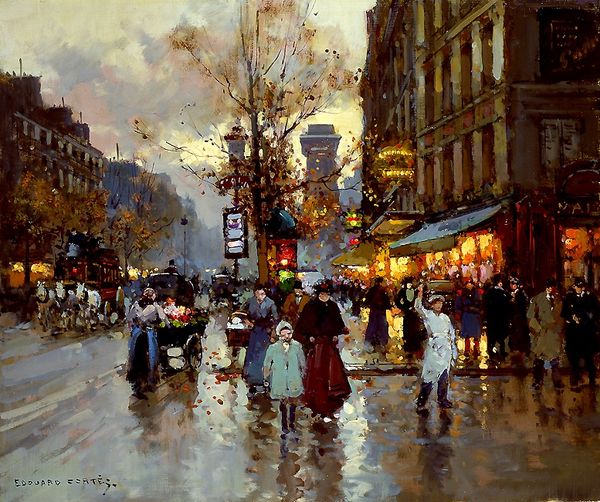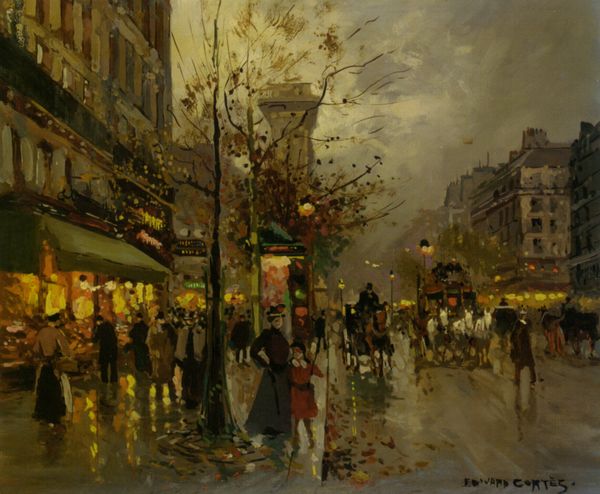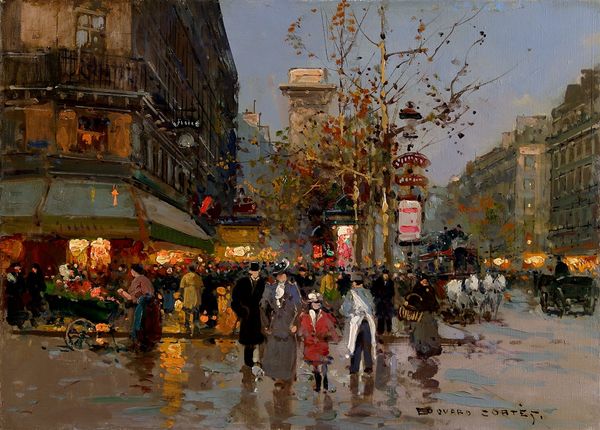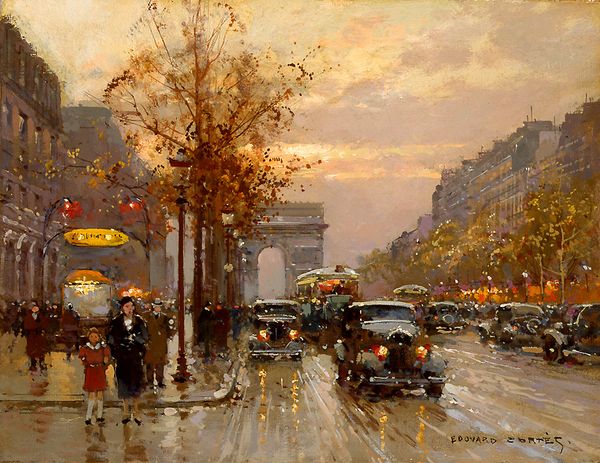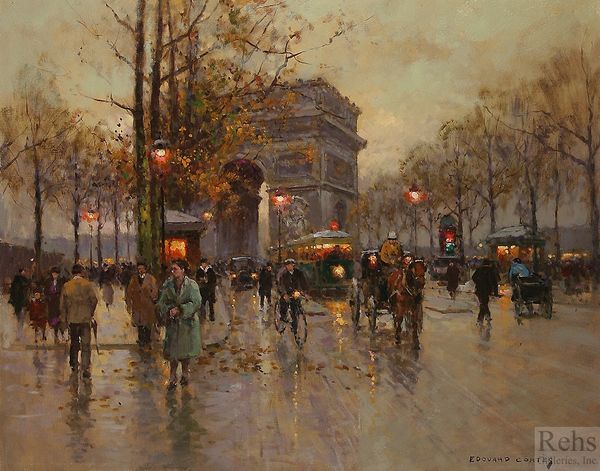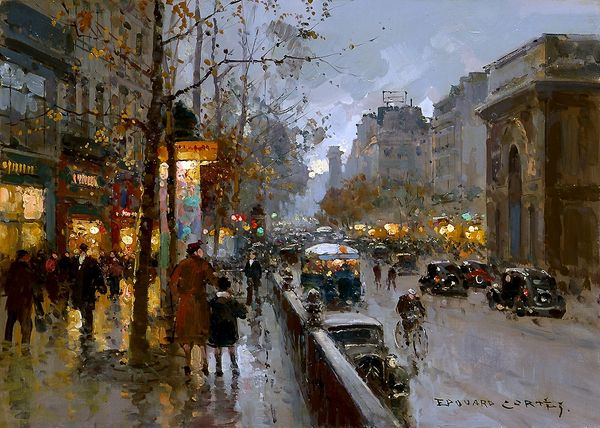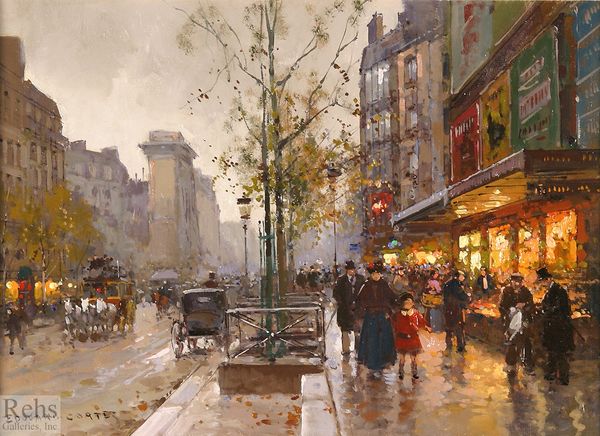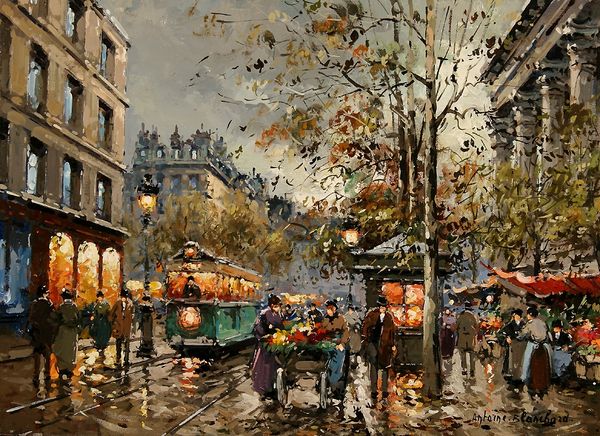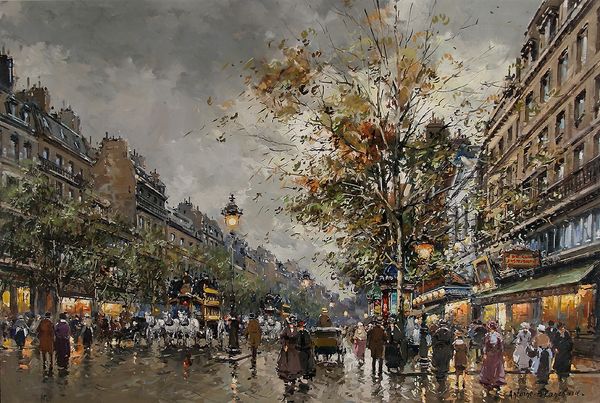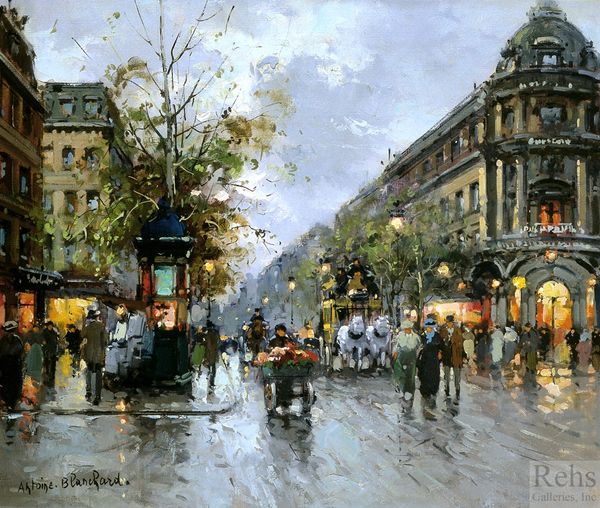
painting, oil-paint
#
baroque
#
painting
#
impressionism
#
impressionist painting style
#
oil-paint
#
street-photography
#
square
#
cityscape
Copyright: Edouard Cortes,Fair Use
Curator: This is "Place de la Republique," an oil on canvas by Edouard Cortes, notable for his cityscapes, particularly Parisian scenes. What catches your eye? Editor: The muted color palette—it evokes such a somber mood, like a city settling in for a long, dark winter. You can almost feel the damp chill rising from the street. Curator: The 'city of lights' often obscured, wouldn't you agree? Cortes lived through immense political and social upheaval; it is impossible not to interpret his melancholic streets through that lens. This area was once a key site during the French Revolution and the Commune; there is blood on these cobbles. Editor: It’s compelling to think about the layers of labor involved. Cortes would've been sourcing his materials—canvas, paints—likely from other artisans, engaging with a whole chain of production even before applying brush to canvas. Curator: Absolutely. These cityscapes weren’t made in a vacuum; consider the influence of Impressionism. His work captures the flâneur’s perspective. Baudelaire called for depictions of the fleeting moments of modern urban life and of what he termed ‘the life of our city:’ The rapidly changing urban fabric of Paris as both an aesthetic object and a subject for art is relevant to remember here. Editor: Yes, it makes me consider the perspective of the ordinary working people of the period, those who labored to build that rapidly-changing city. Were they ever considered in all that "fleeting modernity," or where their contributions overlooked? Curator: It certainly brings those questions into sharp focus. By centering them within their spatial context—the city and its monuments to political life—we can use paintings like these as windows to examine their experiences and voices, considering art in light of history, class, and representation. Editor: Seeing it this way reveals hidden layers, from raw materials to human experiences and the economics of an industrial world. It enriches our appreciation. Curator: Precisely. I think both these approaches encourage a deeper understanding, not just of the image but of ourselves.
Comments
No comments
Be the first to comment and join the conversation on the ultimate creative platform.
